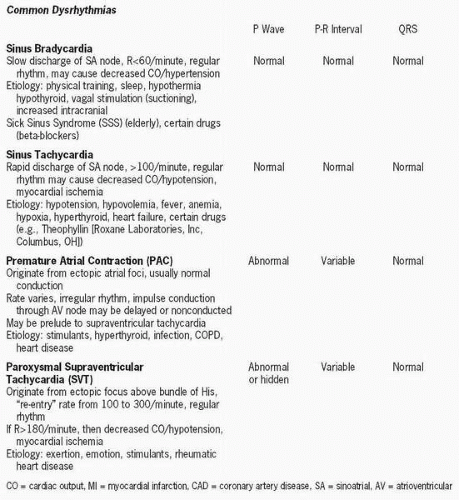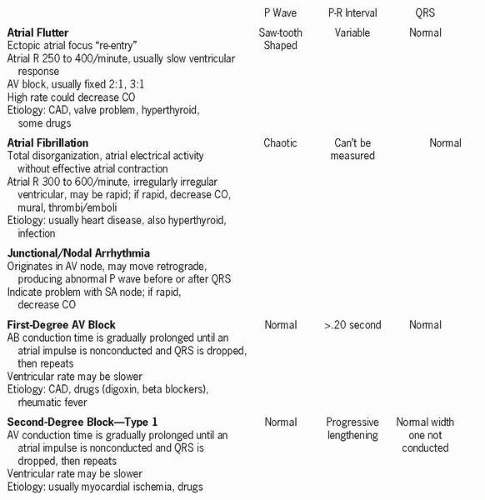Dysrhythmias
Normal contraction of the heart is achieved by the domination of a single pulse generated by the sinoatrial (SA) node, which is known as the “natural pacemaker” of the heart. This sets off a unique series of impulses throughout the heart. (see Chapter 31 for the conduction system of the heart). The terms dysrhythmia or arrhythmia are used interchangeably to describe the disturbance of normal cardiac rhythm occurring as a result of alterations within the conduction of electrical impulses. These impulses stimulate and coordinate atrial and ventricular myocardial contractions that provide cardiac output. Dysrhythmias may have serious consequences because coordinated electrical function of the heart is directly related to the coordinated myocardial contraction necessary for normal cardiac output. They can occur intermittently as a “skipped” or rapid beat or may be more serious abnormal conductions leading to heart failure.
Four inherent properties make up normal cardiac rhythm: automaticity is the ability to generate spontaneous impulses, rhythmicity is the regular generation of impulses, conductivity allows transmission of impulses, and excitability is the response to stimulation. There are two basic types of dysrhythmias: tachydysrhythmias, which are the most common, and bradydysrhythmias. There are two fundamental causes of dysrhythmias: disorders of impulse formation and disturbances of impulse conduction. In addition to the causes and types, there are two major groups of dysrhythmias: supraventricular dysrhythmias, which arise above the ventricles, and ventricular dysrhythmias, which arise in the ventricles. Ventricular dysrhythmias are more dangerous because the ventricles are the main pumping chambers.
Stay updated, free articles. Join our Telegram channel

Full access? Get Clinical Tree





